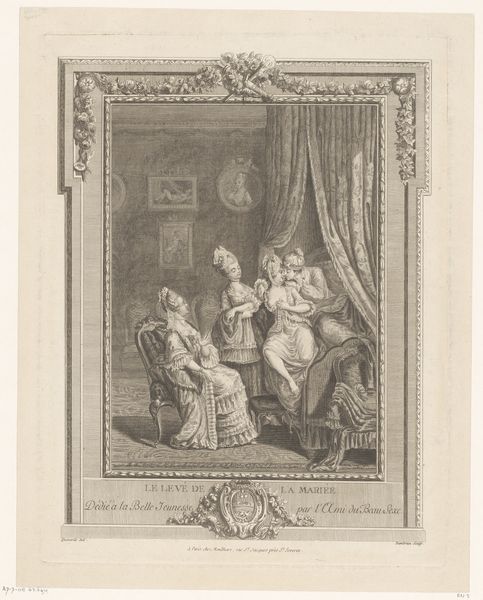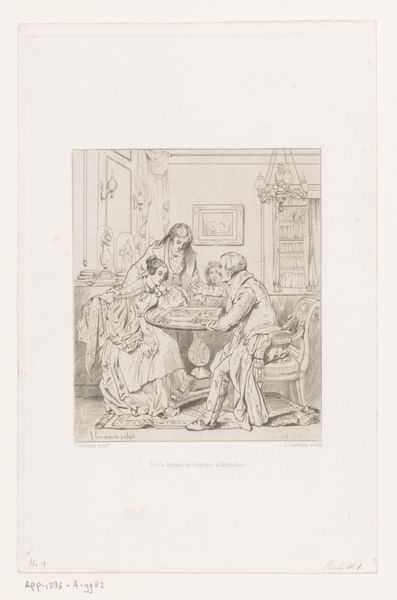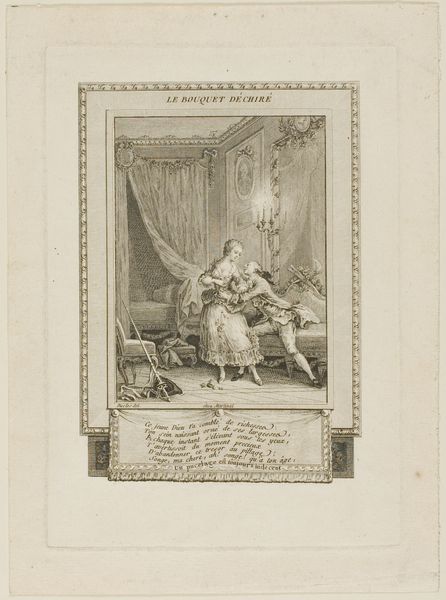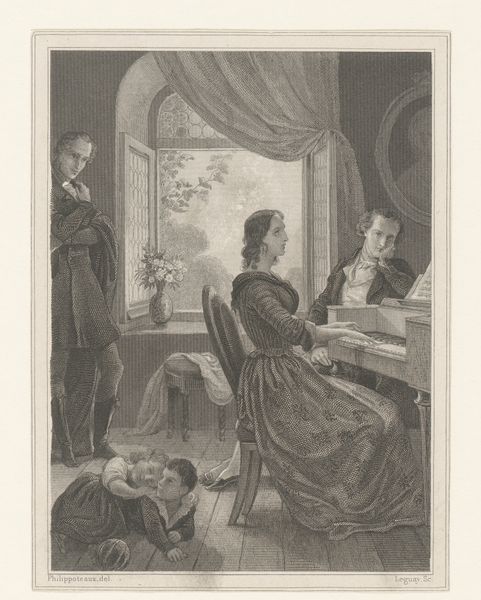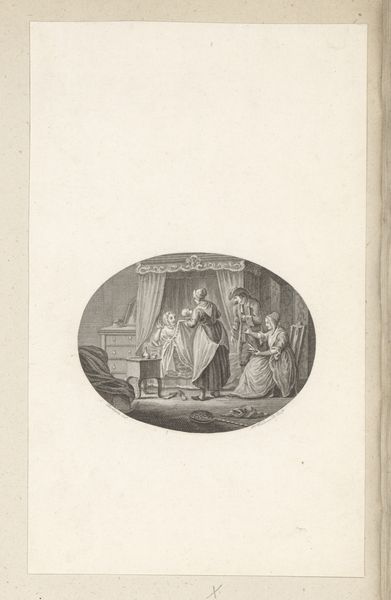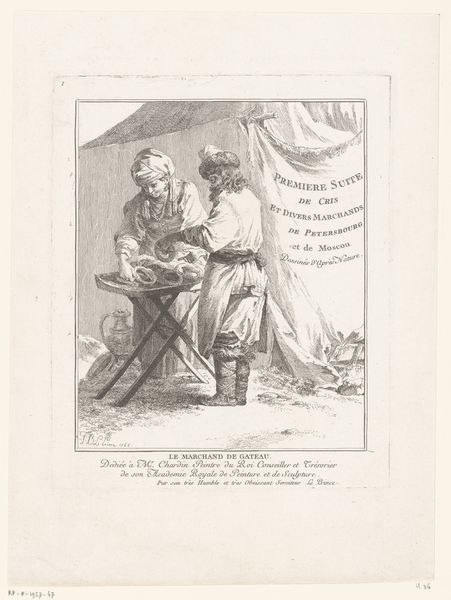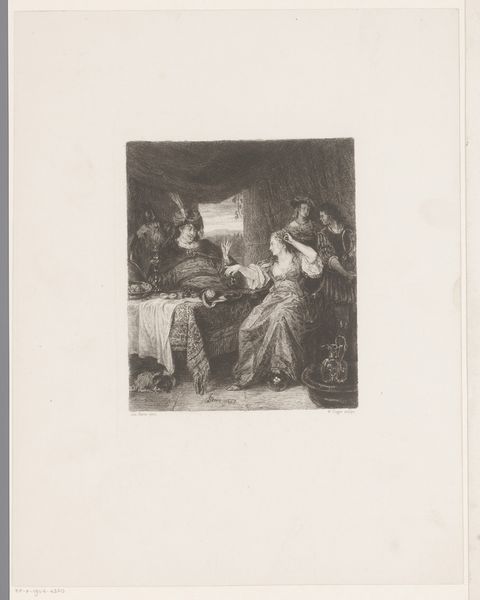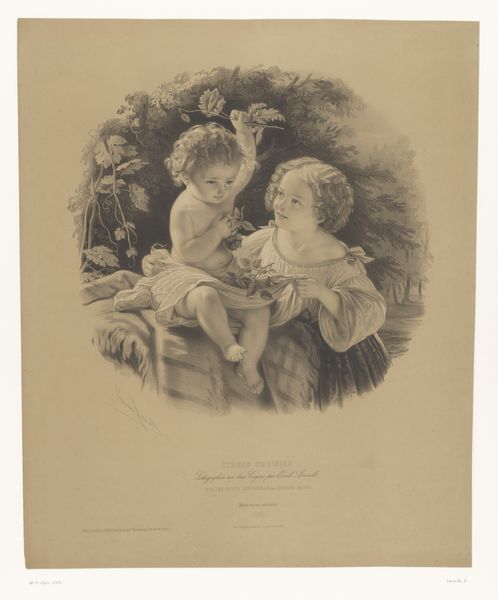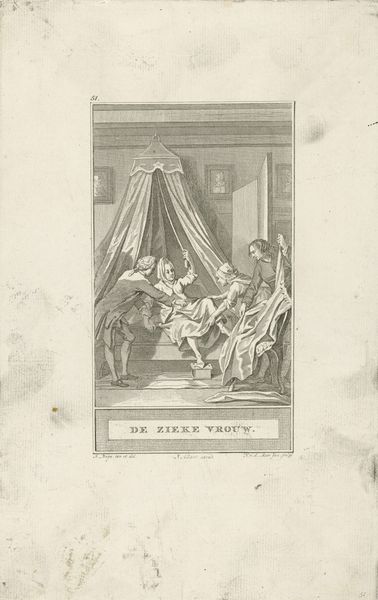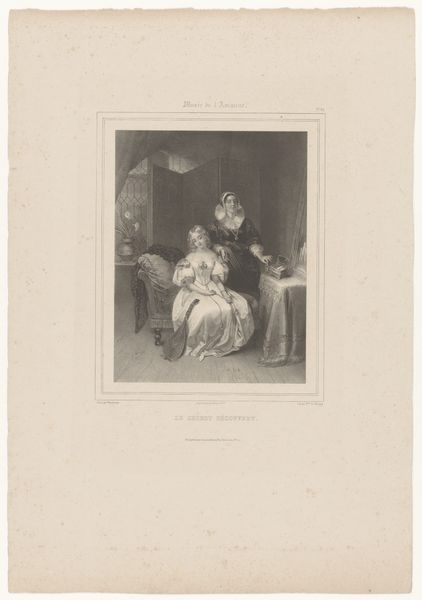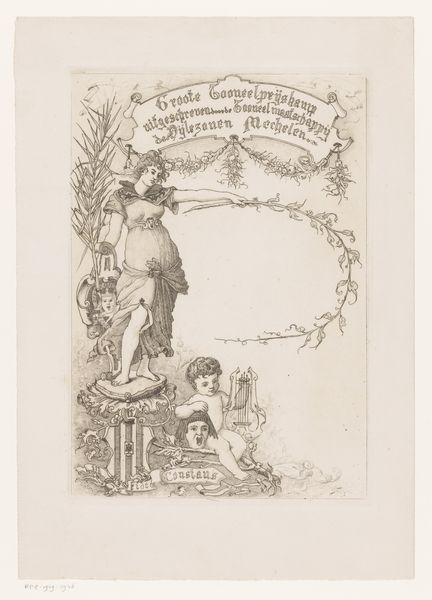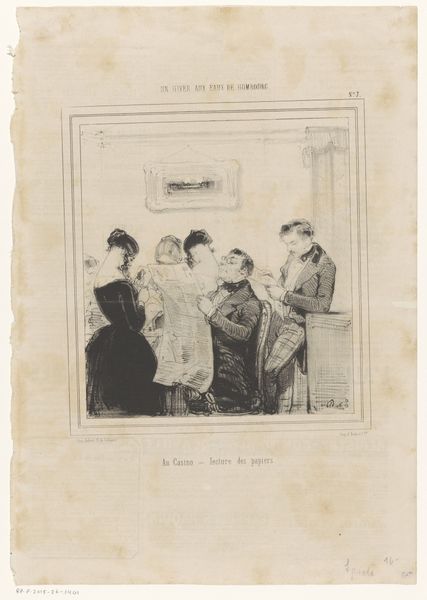
Omslag til J. Moldenhawer: "Læsning for små børn" 1820 - 1887
0:00
0:00
print, woodcut, engraving
# print
#
woodcut
#
genre-painting
#
history-painting
#
academic-art
#
engraving
Dimensions: 187 mm (height) x 129 mm (width) (bladmaal)
Curator: Here we have Johan Frederik Rosenstand’s "Omslag til J. Moldenhawer: "Læsning for små børn", created between 1820 and 1887. It’s currently housed here at the SMK. What are your initial impressions? Editor: A hushed domestic scene. I’m struck by the almost photographic precision of the lines, a sense of staged intimacy carefully crafted, although clearly made with modest tools. Curator: Precisely. The print, made using woodcut and engraving, invites a close reading of its compositional elements. The central figure, a mother perhaps, anchors the scene, directing our gaze from her serene countenance to the two children engrossed in study. Observe how the delicate line work defines not only the figures but also the gradations of light and shadow. Editor: Yes, and that detailed line work, when you think about it, would have been painstaking labor. Imagine the craftsman, meticulously carving and etching to reproduce this scene. And beyond that, think about its function as an book cover meant for wide distribution: the materials, production process, and ultimately, its consumption. Was it truly meant for “små børn” given the fine detail? Curator: A valid question! Considering the academic artistic style, the piece operates within a visual language that promotes virtues of literacy and domesticity—values perhaps more pertinent to the adults purchasing the book. The floral and avian motifs above and below the image reinforce this. The nest could function as a metaphor of family. Editor: Absolutely. And it seems that it idealizes a domestic harmony attainable by, likely, a very small section of the populace. The very materiality of this print becomes enmeshed with class structures. Was Rosenstand directly involved in the carving, or was that someone else entirely? Curator: That’s an area for continued investigation. Nonetheless, Rosenstand, whether designer or maker, employs classical structure. The print's symmetry—framed figures, central illumination—emphasizes balance and order, speaking to a desire for rational composition, which certainly relates to academic artistic values. Editor: It does create a neat narrative that can be consumed smoothly, hiding much of the gritty detail of its making and perhaps also hiding the realities of childhood itself in that era. Thank you, this was revealing. Curator: My pleasure. Analyzing the construction offers insight to art and ideology.
Comments
No comments
Be the first to comment and join the conversation on the ultimate creative platform.
